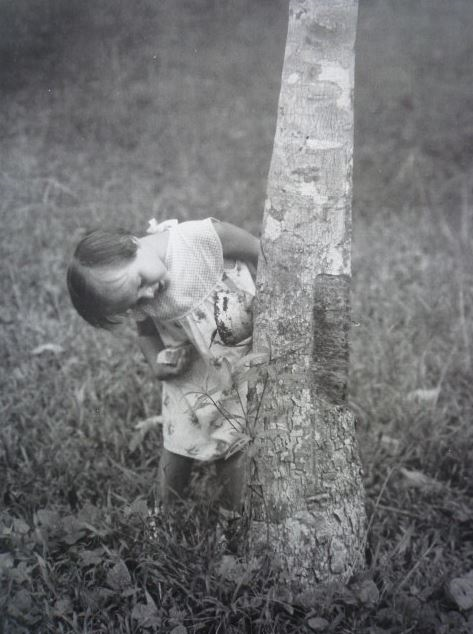Currants in my Cake
'Life is sometimes sad and often dull, but there are currants in the cake and here is one of them.'
Nancy Mitford
 Part-way down our garden lies a mass burial of eight cattle
and six horses - adult, immature, neonatal and unborn - mostly arranged
nose-to-tail. They were discovered in a ditch during the archaeological dig prior
to the building of our house on the “high lands” of the Fen. They have been
radiocarbon-dated to 40 to 230 AD, the very Late Iron Age to mid-Roman period.
It is speculated that their burial represents a significant event in the lives
of the ancient Fenland people, possibly as a votive offering or sacrifice, but
no close parallels have been discovered anywhere else in the country. The
burial site and its mysteries are shrouded once more in clay. Maybe from the
air we could detect the line of the ditch, but from ground-level there are no
signs.
Part-way down our garden lies a mass burial of eight cattle
and six horses - adult, immature, neonatal and unborn - mostly arranged
nose-to-tail. They were discovered in a ditch during the archaeological dig prior
to the building of our house on the “high lands” of the Fen. They have been
radiocarbon-dated to 40 to 230 AD, the very Late Iron Age to mid-Roman period.
It is speculated that their burial represents a significant event in the lives
of the ancient Fenland people, possibly as a votive offering or sacrifice, but
no close parallels have been discovered anywhere else in the country. The
burial site and its mysteries are shrouded once more in clay. Maybe from the
air we could detect the line of the ditch, but from ground-level there are no
signs.To reach the burial site, I pass beds of shrubs, roses, honeysuckle and clematis. I stoop to enjoy any detectable scent from each flower or the leaves, careful in case I disturb one of the many webs that spiders are spinning amongst the foliage. I am walking on the lawn, mainly rye grass and meadow grass, plus mosses and fungi and a medley of commonplace plants, such as bristly ox-tongue, buttercup, ribwort plantain, groundsel, dandelion, daisy, and ragwort that have blown in or hitchhiked on birds and other creatures. Amongst the plants are scattered dozens of grey and white feathers, evidence of an unwelcome pigeon struck down by a welcome sparrowhawk.
The ground slopes gradually to the boundary hedge of hawthorn, dog rose and dogwood, which my husband planted in February sleet in the year after we moved in. In contrast, this is an exquisite mid-September day of cloudless blue sky in which a solitary harris hawk or buzzard floats on the thermals, the afternoon quiet pierced only by the scolding of an unseen blackbird.
The spindly branches of the crabapple are weighted with deep rosy pink fruit. Rubbing off the waxy bloom with my thumb reveals a shine like patent leather. The many species of birch we planted in a small copse, under-planted with narcissus and snake's head fritillary, lean from the prevailing winds and interlace their branches. The leaves of the field maple are mottling and drooping from drought. The autumn raspberries have almost stopped fruiting, although a few hopeful bees and hoverflies are still casting about them for flowers.
I pause to look beyond our garden and across the miles of open Fen, one of the most beautiful views in the county. Straight ahead, opposite the house, prominent on the clay ridge, which is an ancient cliff edge above a prehistoric sea, sits the four-storey tapering stone tower of the 1803 Great Mill. Its impressive sails were removed about a decade ago for safety reasons, but successive owners have dreamt of restoring them and setting the three pairs of millstones grinding once again. To the west lies a patchwork of pastureland and ancient multi-species hedgerows in countless shades of green and brown. This fertile land, unless inundated, has been under cultivation or pasture since Neolithic times, at least 6,000 years.
In the autumn, milky mists can fill the lowlands so that only the crowns of the tallest trees are visible for miles. Today, the air is as clear as I have ever seen it and the Sandy Heath TV mast and the eight wind turbines on the horizon at Graveley stand out sharply against the sky.
I find two raspberries and hold them in my palm as I
complete the circuit back to the house. To them I add a late strawberry and a small
ripened fig from the greenhouse. I linger there for a few minutes, breathing in
the fragrance of pelargoniums and damp soil, and listening to the scratching of
numerous crane flies against the glass. I place the fruits in my mouth, all
together, and relish their distinctive hits of flavour. I resist swallowing
them for as long as I can, still walking, looking down, up and around at the
landscape I am so fortunate to call home.



Comments
Post a Comment